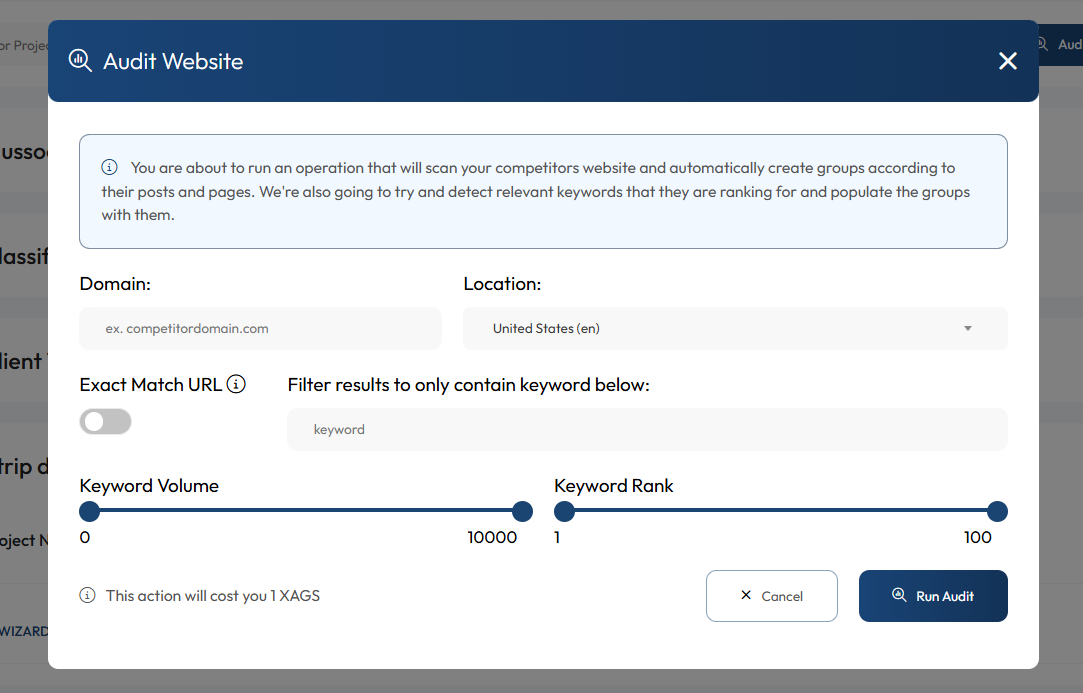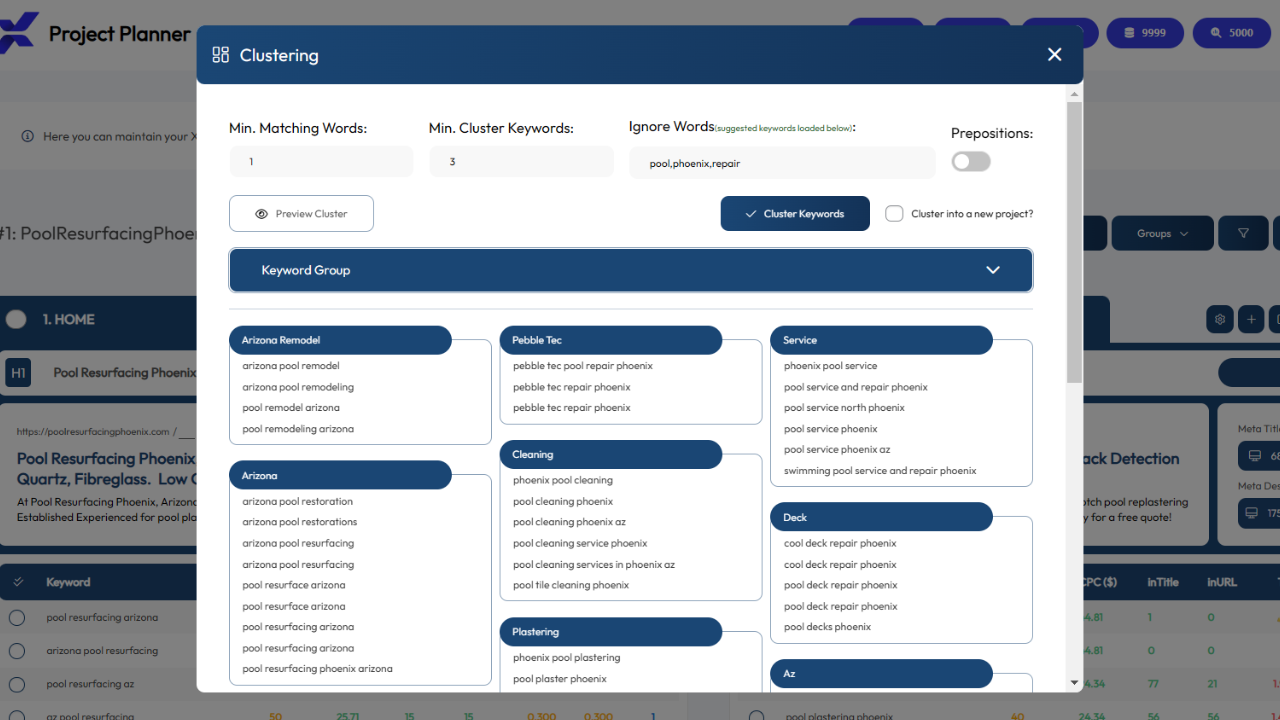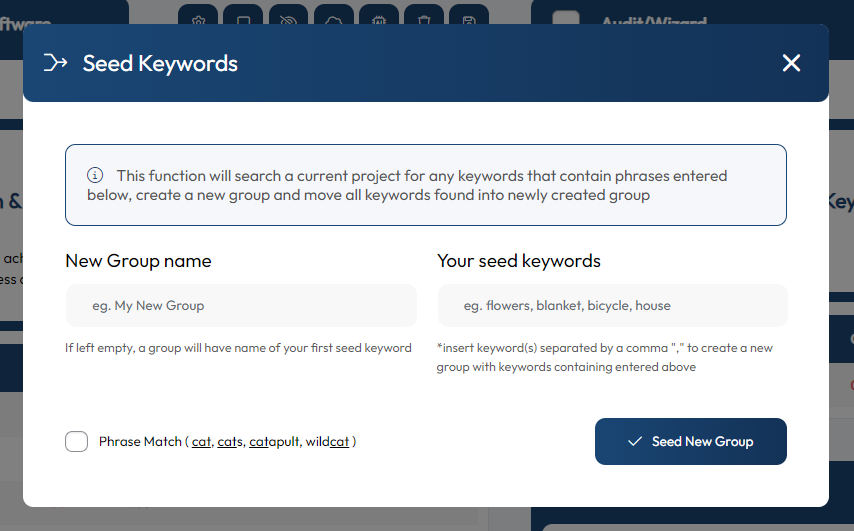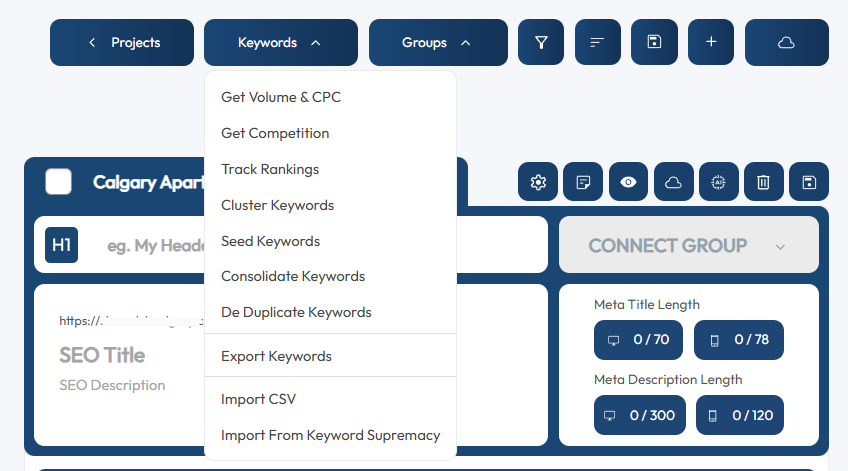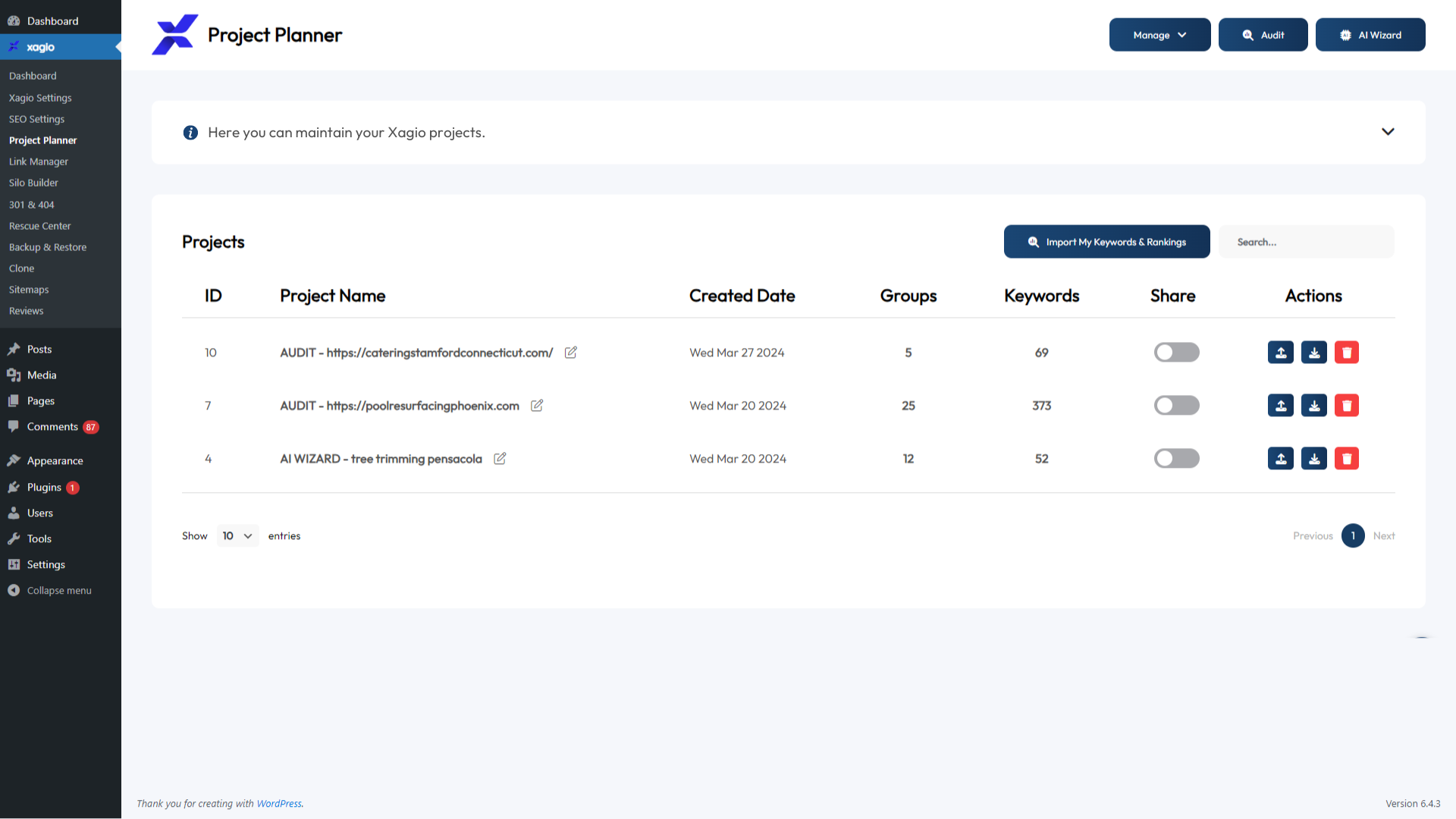Competitor keyword analysis is one of those tasks that requires attention to detail, data management skills, and the ability to spend days and weeks on the most important foundation of every SEO strategy.
The problem is that spending weeks on competitor keyword research is not the most efficient use of your or your VA’s time.
That’s why I had my team develop automation tools for Xagio that find, analyze, and group keywords in seconds rather than weeks.
That’s not an exaggeration, and by the end of this post, you’ll have a different opinion about how you’ve been analyzing your competitors’ keywords.
What Is The Goal Of Competitor Keyword Analysis?
There are four main goals of SEO competitor analysis, and it’s critical to understand that you don’t just want to make strategic decisions based on a keyword’s search volume alone.
1 - Targeted Content Planning
The first goal of finding competitor keywords is all about identifying content opportunities for your own website.
And there are two ways to look at this.
First of all, competitive keyword research will give you an indication of missed opportunities on existing pages.
You might have similar rankings as your competition for specific organic keywords on a page, but other keywords might not be anywhere to be seen. If these keywords are highly relevant to your existing page, then you could be missing an entire piece of content that is important for the keyword’s search intent.
Secondly, your competitors’ keywords can help you find gaps in content that you aren’t addressing at all. Maybe your keyword research missed them, or these could be completely new and trending organic keywords.
Either way, if you find pages and keywords you’re not addressing on your site, then those should be a top priority for your content plan.
2 - Cluster Keywords Into Groups
Before you start randomly picking keywords from your initial research, make sure that you focus your competitor keyword analysis on creating groups of keywords by relevance and search intent.
To create lists of valuable keywords, you have to start with a long list and then group them, which generally means copying and pasting them across different tabs in spreadsheets.
It’s a mind-numbing but vital process that helps you better understand your competitors’ keywords.
But you have to be very careful to also look out for keyword cannibalization issues that your competitors might already be dealing with.
Let me explain.
3 - Avoid Keyword Cannibalization
Your analysis of your competitors’ keywords can also tell you something about the potential risks of keyword cannibalization.
This is a phenomenon where a website has multiple pages that target the same keyword. When this happens, search engines rank none of the pages for those cannibalized keywords.
What you need to look out for during you competitor keyword research is any keywords that are particularly low ranking for pages. This is an indidactor that either the page isn’t optimized correctly, or that the keywords are better suited for a separate page.
4 - Identify Low Hanging Search Engine Fruit
And finally, looking at what your organic competitors are doing will give you some great information about low-hanging fruit.
These are lower-competition keywords your competitors are targeting that are still driving good search traffic. Generally, it will take less time and effort to create low-competition content and get it to rank.
These can be easy wins that positively impact your return on investment.
By balancing volume and competition metrics, you’ll set your strategy up for faster results.
Competitive Keyword Analysis Using Xagio
Now that we’ve covered why it’s so important to invest time and effort into competitor keyword analysis let me show you how Xagio makes that process insanely fast and easy.
Unlike every other keyword research tool out there, the Xagio team didn’t just focus on finding the keywords your competitors are using.
We also built features that actually automate most of the research and analysis.
1 - Xagio Audit Of Competing Sites And Pages
Once you have identified your main target keyword and taken a look at the first search engine results page, you’ll have a better idea of who your competitors really are.
The first step here is to copy the top five competing URLs so that you can use them in Xagio’s Audit tool.
The first step you need to take is to create a new project folder on the Project Planner tab of the cloud app. Within this folder, simply click on the “Audit” button at the top right and enter the first competitor website.
The audit will take less than 10 seconds to find competitor keywords. The best part is that all the keywords will be grouped into keyword clusters for each of the existing pages.
No filtering, no searching, no copying, no pasting, no mind-numbing days of data management.
Repeat this step for each of the other four competitor sites and you’ll end up with five audits that list out a massive amount of keyword clusters.
One other step that will help you get a more targeted list of your competitor’s keywords is to run an audit on the most important pages rather than the competitor’s URL.
This step will force Xagio to pay specific attention to a single page and its organic traffic. One of the main benefits, in addition to finding particular keywords relevant to the topic, is to identify potential cannibalization issues.
More on that shortly.
2 - Cluster Competitor Keywords
While Xagio automatically groups competitor keywords based on the existing pages on the audited sites, it’s not always the case that you have to follow the exact same clustering.
In fact, many of the relevant keywords your competitors are already targeting might be more suitable for a separate page.
Not everything has to be a 20,000-word essay exploring every single aspect of a topic.
Here’s the good news, though.
Xagio has two features that allow you to change the clusters without spending the next two weeks copying, pasting, and questioning your choice of profession.
The first thing you can do is launch the Cluster Keywords function within each Audit.
By adjusting the minimum words and keyword values, Xagio will re-group keywords. And you can preview the results before you commit them to the audit. I highly recommend adjusting these values to see what it does to the clusters; there’s a good chance you’ll learn about some great opportunities.
The second option you have is the Seed Keywords feature. Launching this will bring you a screen where you can enter a specific seed word that Xagio will use to create a new keyword group.
This is an amazing tool if you want to ensure that all the keywords highly related to one topic go into one group. Rather than spending hours and days copying and pasting them, Xagio will do this in seconds.
Once you’re happy with your clustering, it’s time to dive deeper into your keyword analysis.
3 - Load Competition And Ranking Data
To figure out how competitive keywords really are, you need a few additional data points:
- Monthly search volume
- Cost per click (CPC)
- InTitle and InURL competition
Xagio offers two options for pulling in this data.
First of all, you can load search volume, CPC, and competition data at a group or keyword level by selecting the terms you want to check in a specific group and then using the “Get Vol & CPC” and “Get Competition” actions.
Alternatively, you can also do this for an entire Audit under the Keyword Functions at the top right of each Xagio Project.
Having all this data presented for each particular keyword group will give you a visual representation that allows you to quickly choose the best combination of high search volume and low competition.
Xagio even highlights the best opportunities for you, allowing you to tailor your own SEO strategy to specific keywords that will provide the fastest return on investment.
4 - Identify Keyword Cannibalization Issues
SEOs who go through the above process manually tend to get to this stage after several weeks for a medium-sized website. At this stage, they grab their target keywords and move on to their on-site and content SEO strategy.
But that leaves out one important step that could save you a ton of trouble later on.
Keyword cannibalization is a situation where search engines identify multiple pages on a site for a specific keyword set. What ends up happening is that none of the pages rank high in the SERPS.
Fortunately, Xagio presents you with relevant keyword data about where competitors rank right now. And that can provide some interesting information about possible cannibalization issues in your competitor’s keyword strategy.
Here’s what I mean.
Let’s say you spot a page on your competitor’s site where most keywords rank high on page 1 of Google. But then there are a few that are on page four or below.
If those low-ranking keywords are not 100% related to the topic of the article, there’s a good chance there’s a cannibalization issue going on.
When you find keywords like this, it’s a good idea to separate them into a new group and create a new and highly targeted page.
5 - Create Content Silos
The final step in using Xagio for competitive keyword analysis is to organize your clustered groups into silos.
Here’s what I mean.
Just having dozens or hundreds of groups for your keyword gap analysis doesn’t give you a good picture of which topical areas you have the biggest opportunities.
While you ultimately want to tackle all the keyword groups to maximize organic traffic, doing so in an organized way will make managing your SEO project a hell of a lot easier.
Again, this is where Xagio offers you a fast and easy way to move lots of keywords and groups.
You can select related keyword groups and then move them to a new project. Each project then becomes a topical silo, and you can easily see the size of each one on the Project Planner tab.
This completes your competitor keyword analysis, and with a little bit of experience, I can tell you that this will take just a few minutes to complete for an entire website.
Start Using Xagio’s Keyword Research Tool
Competitor keyword analysis helps you build a solid foundation for your SEO strategy, but investing days and weeks in a single task is not the way you gain business efficiency.
Whether you’re planning a strategy for a new local SEO client or you want to come up with a content plan for an affiliate website, being able to get started straight away will pay off massively in the months ahead.
Rather than have to put every other aspect of your project plan on hold for several weeks, Xagio will do all the heavy lifting for less than $60 a month.
You’ll have results in minutes, allowing you to start optimizing and creating new content that will move up the search engine results pages faster than ever before.
Register for a Xagio account today and see how insanely easy this process is.
